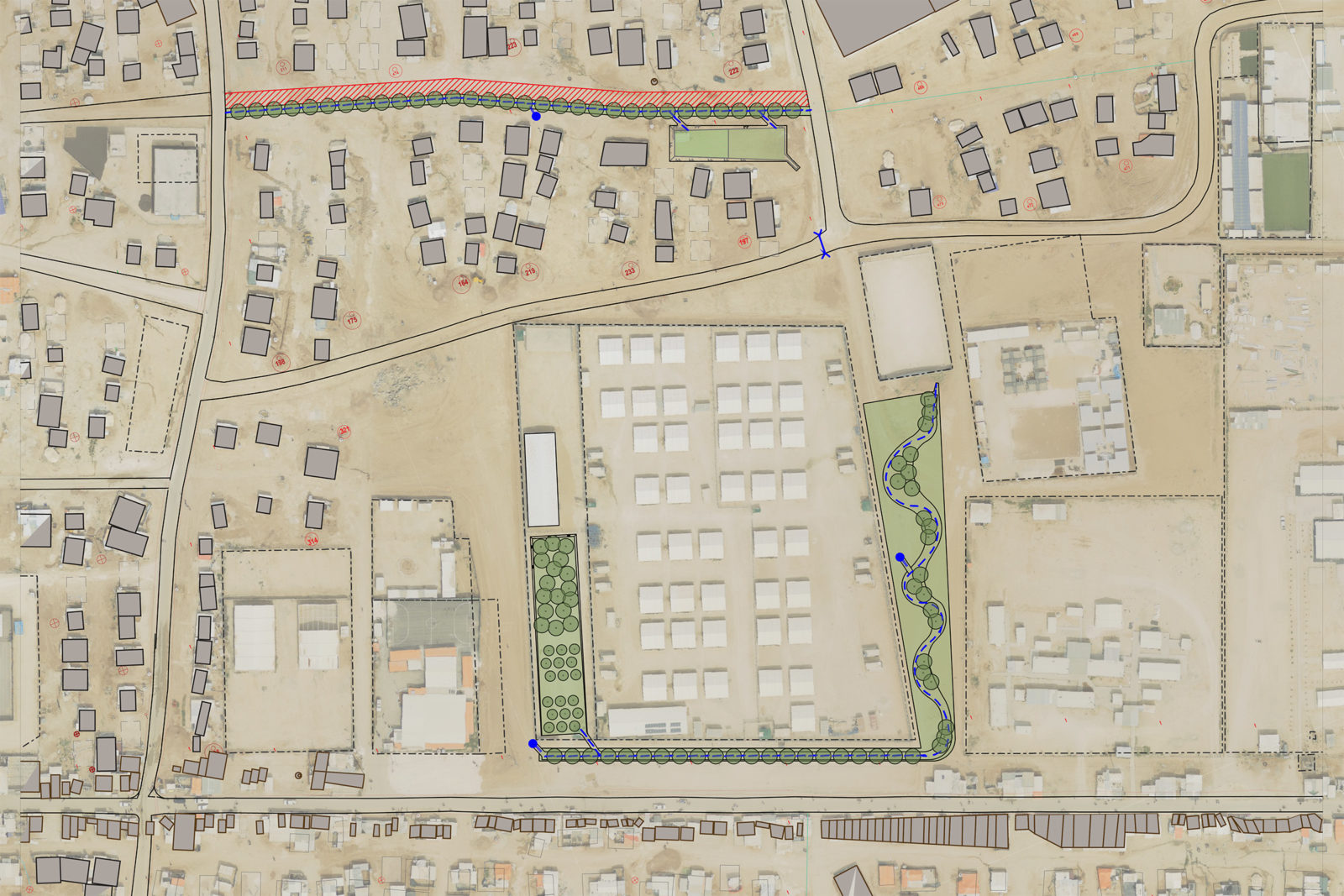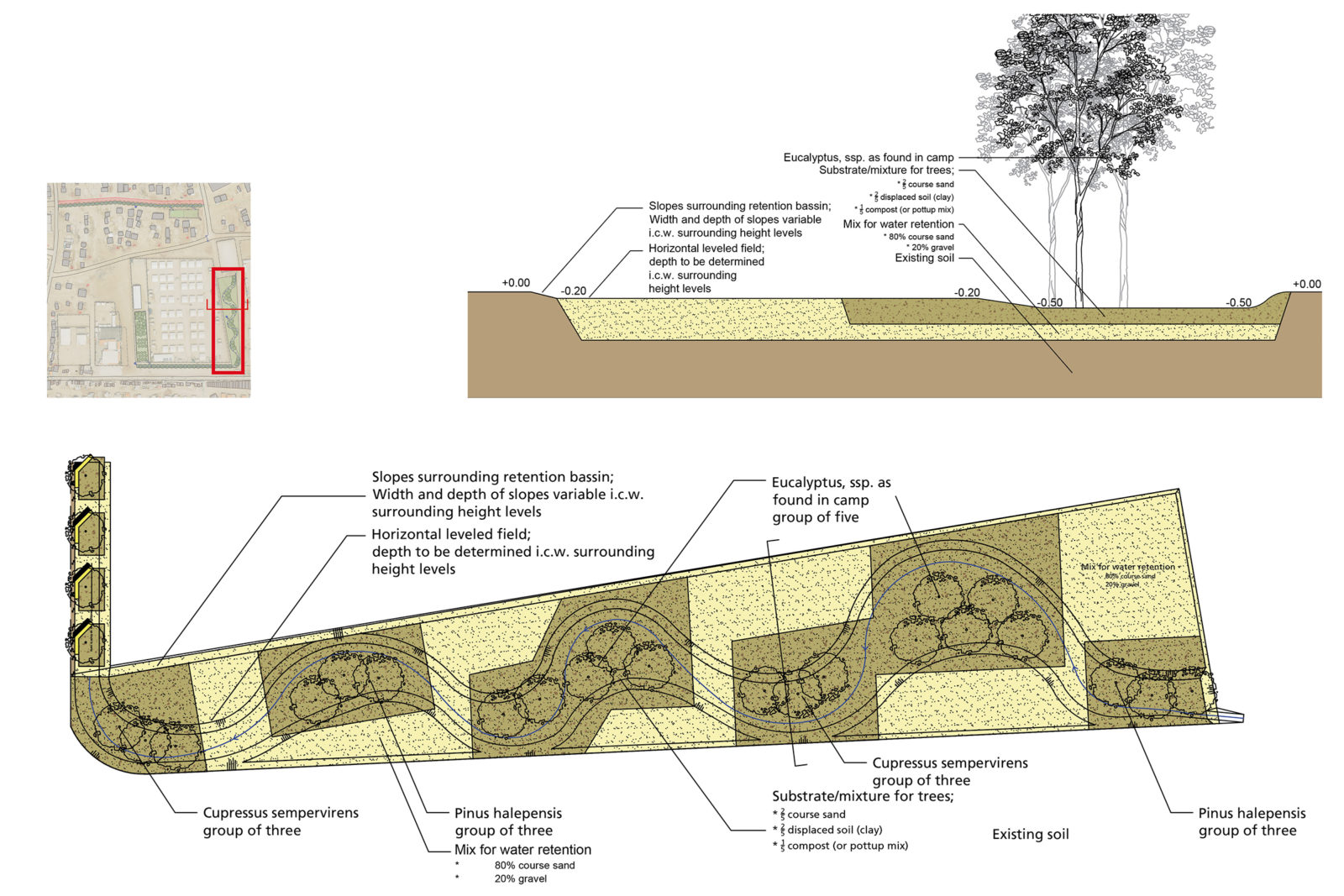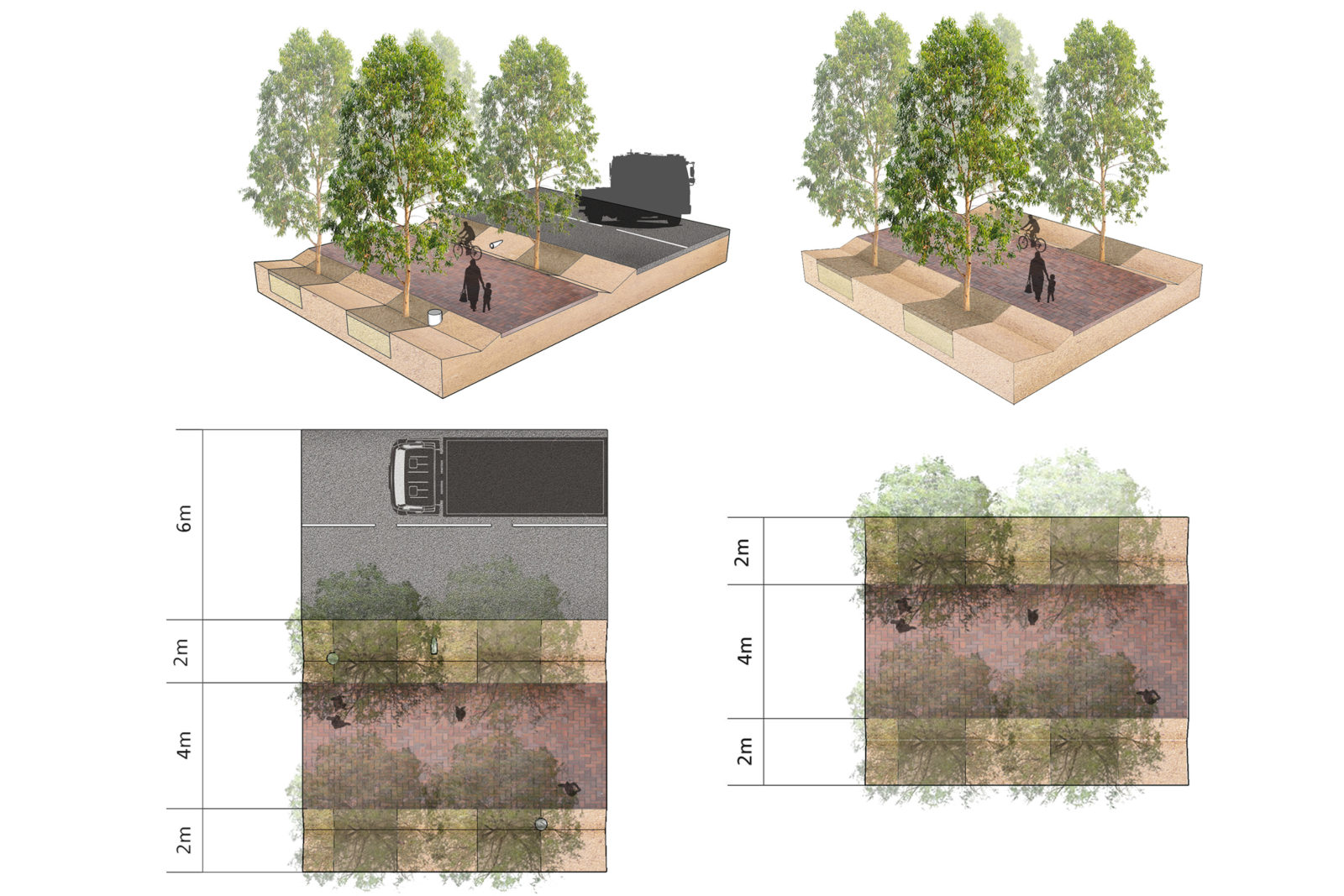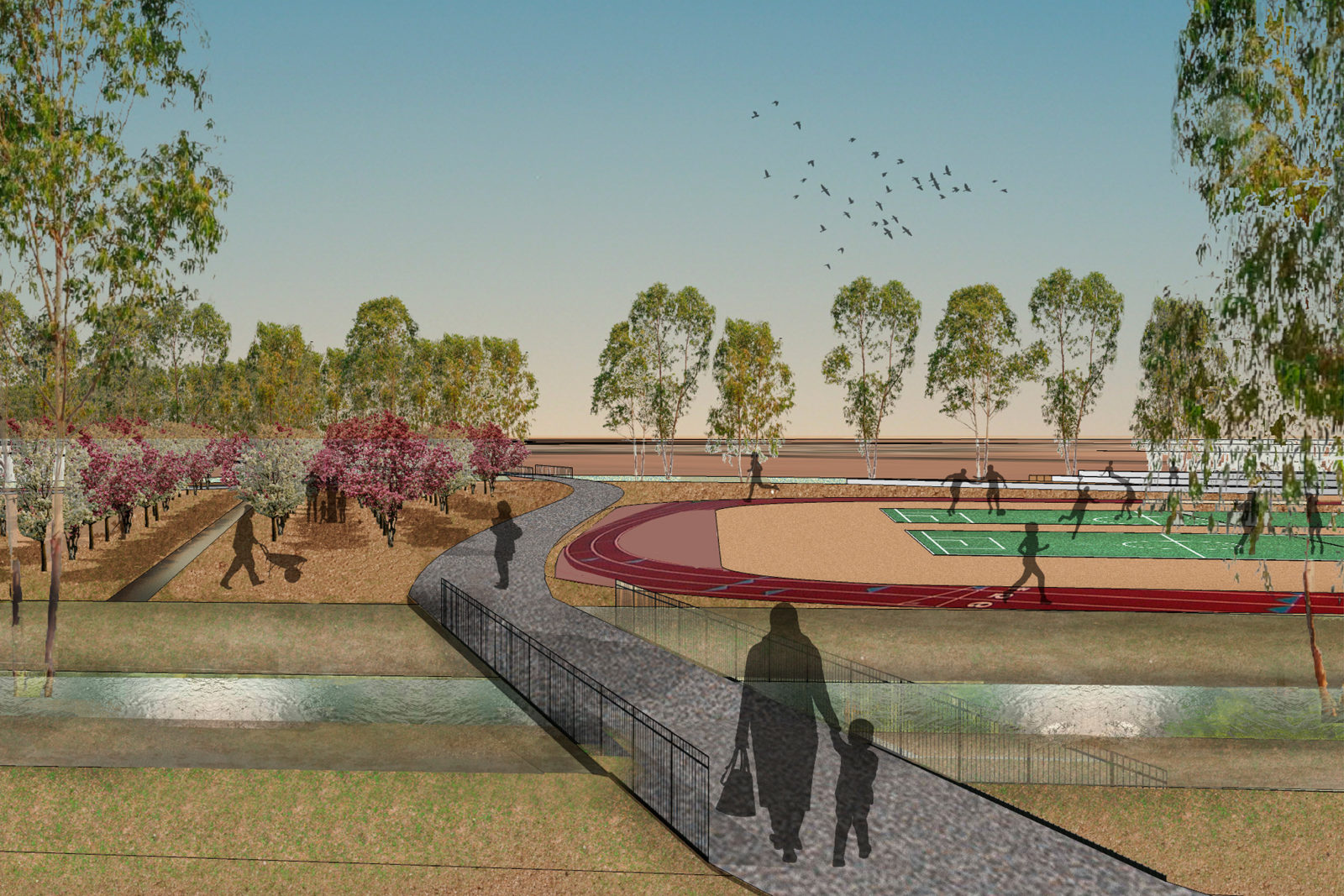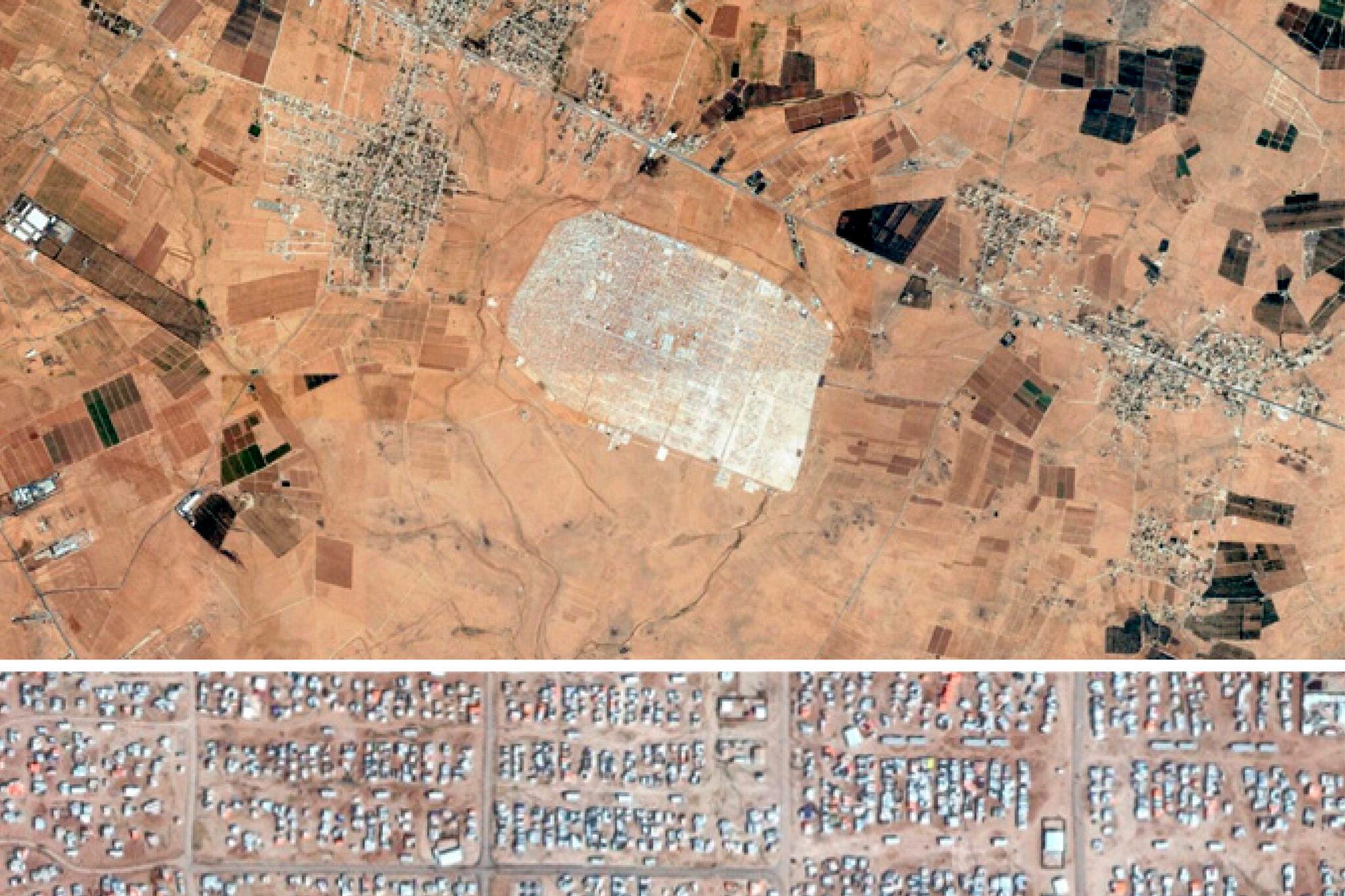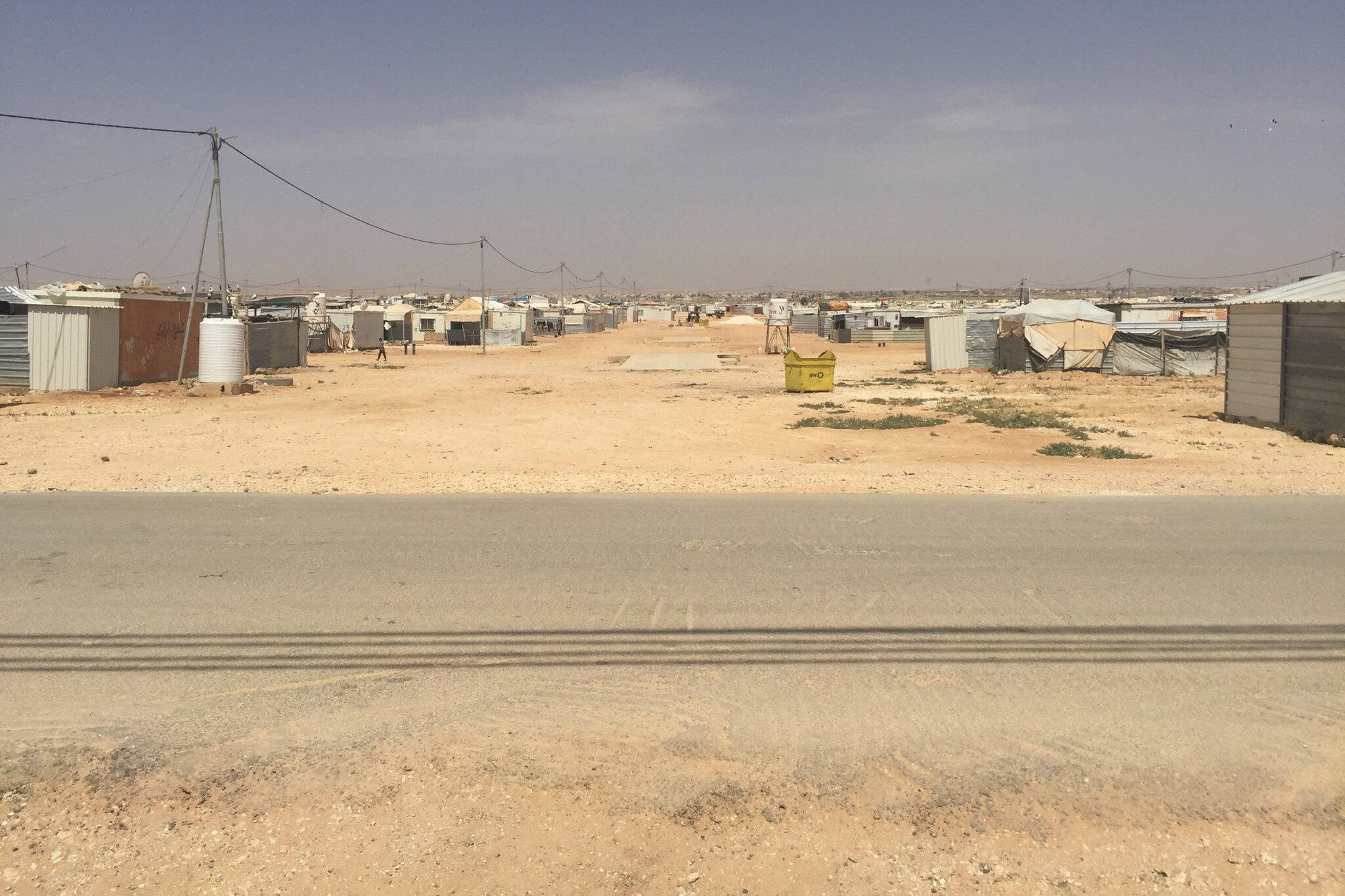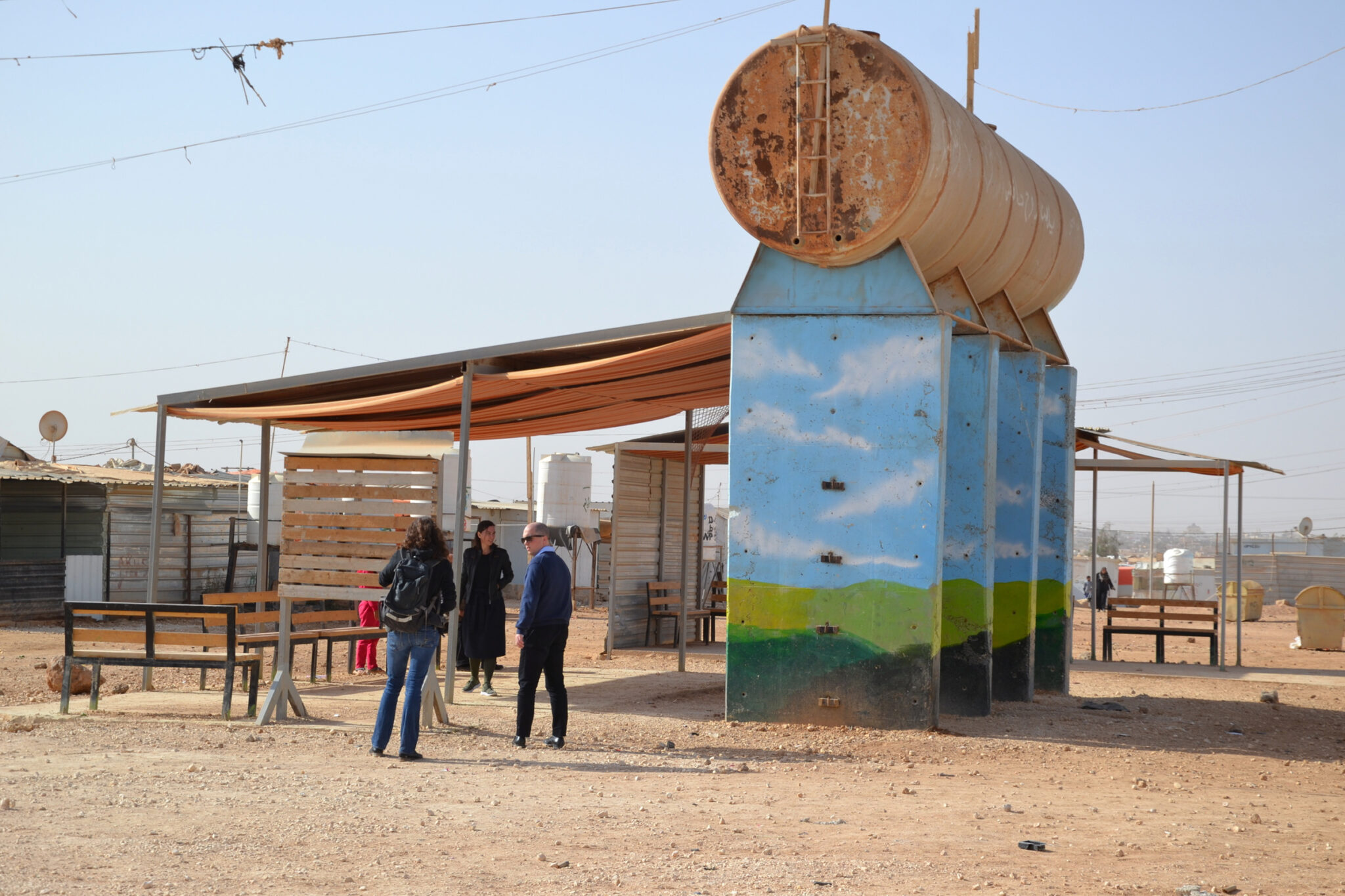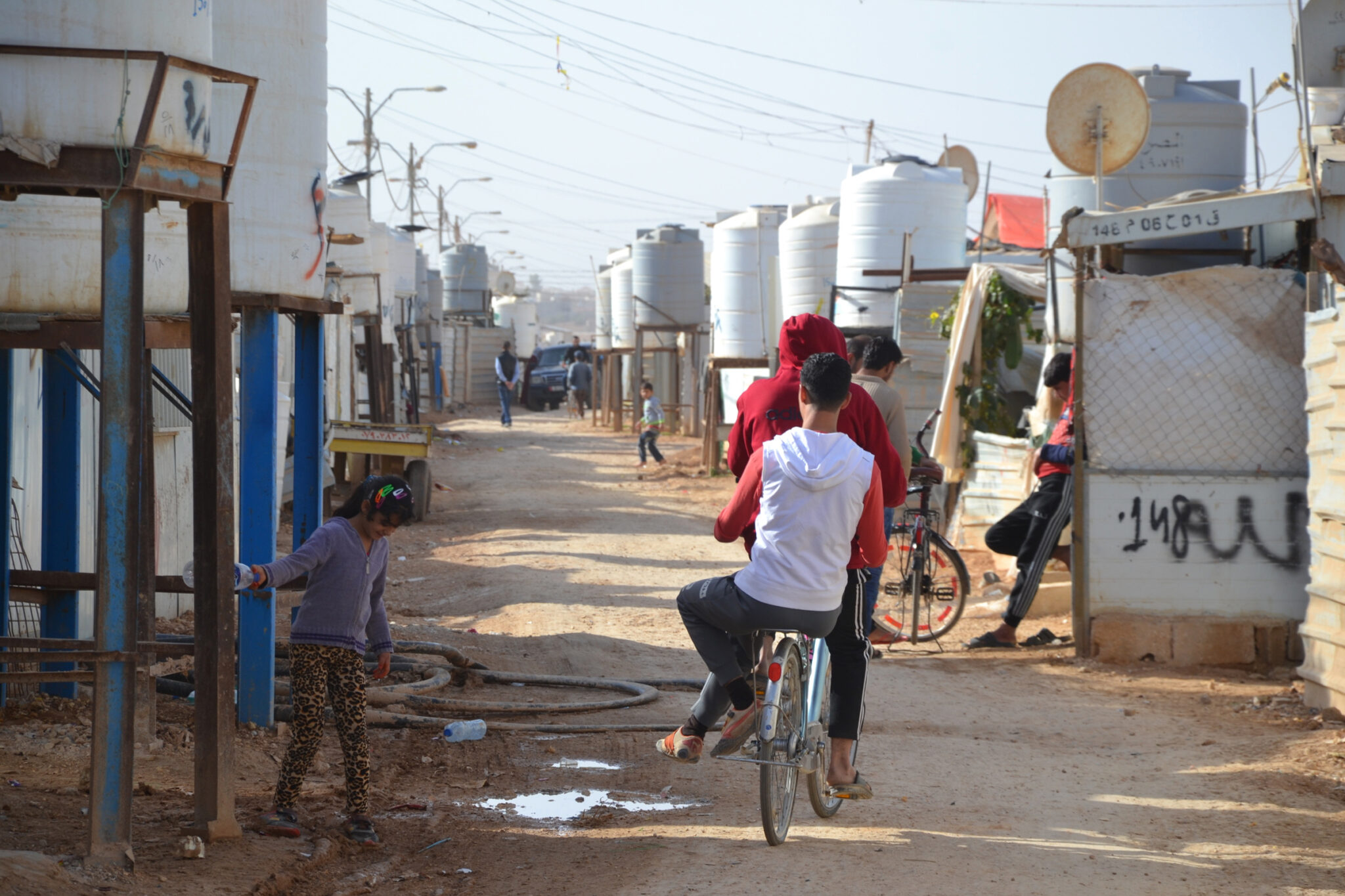Al Za'atari Refugee Camp
Jordanië
Za'atari camp is a large refugee camp in Northern Jordan, close to the Syrian border. In over 5 years time, this camp evolved from a collection of tents into an urban settlement inhabited by about 80,000 Syrian refugees. Together with a team from the Municipality of Amsterdam and commissioned by the VNG International, BALJON landschapsarchitecten drew up a development framework that provides guidance for further urban development. Sample and pilot projects show on a large and small scale how public space can be created in the camp. Despite the arid climate, the rainy season causes floods that bring along a lot of inconvenience.
The example projects show how floods are prevented by harvesting rainwater during the winter months and using it during drought to make and maintain green public space.
Location Google Maps
Client VNG International & Municipality of Amsterdam
In collaboration with Cedrick Gijsbertsen, Sam Sam Water / Wareco
Status Not realised
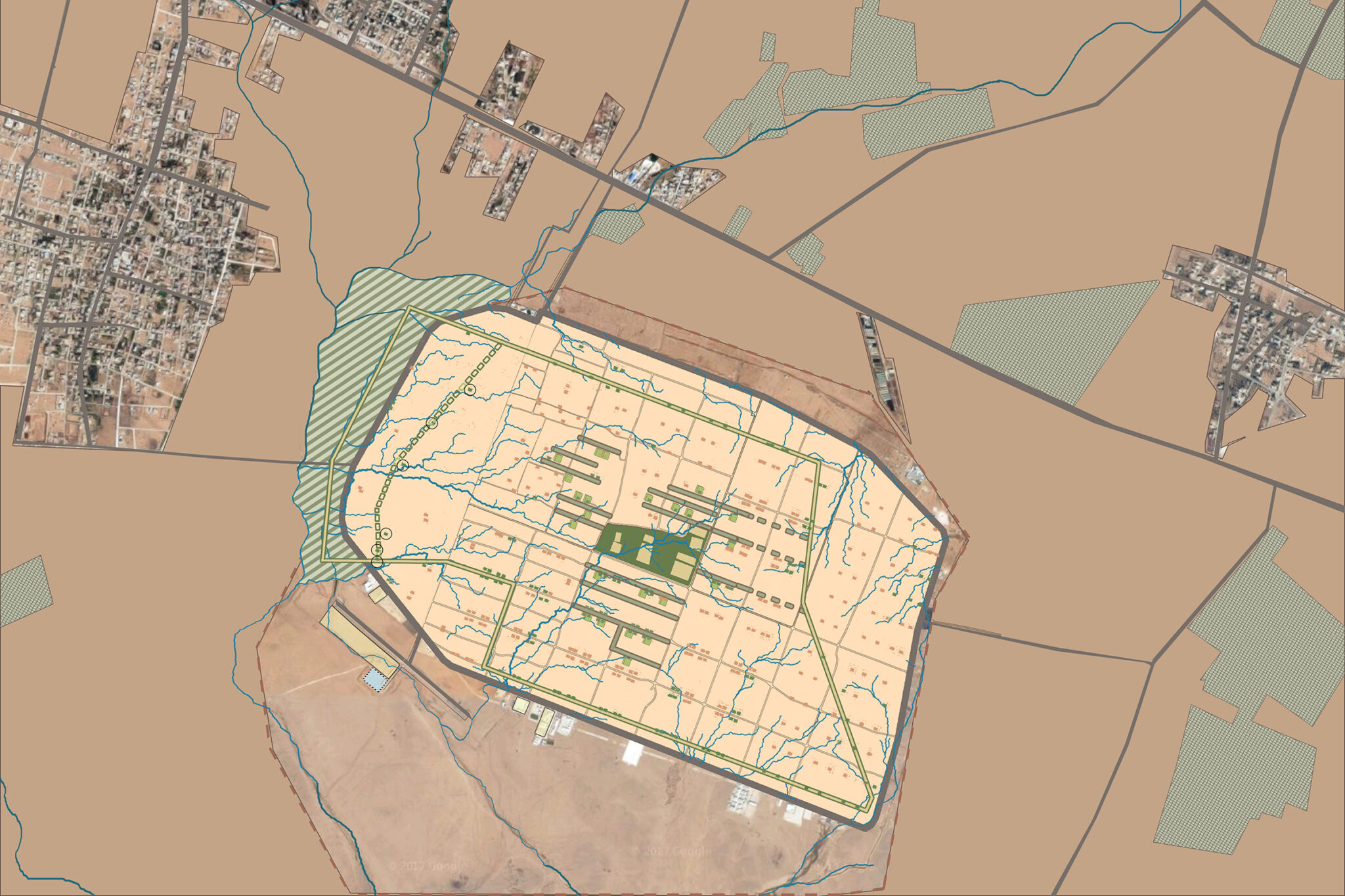
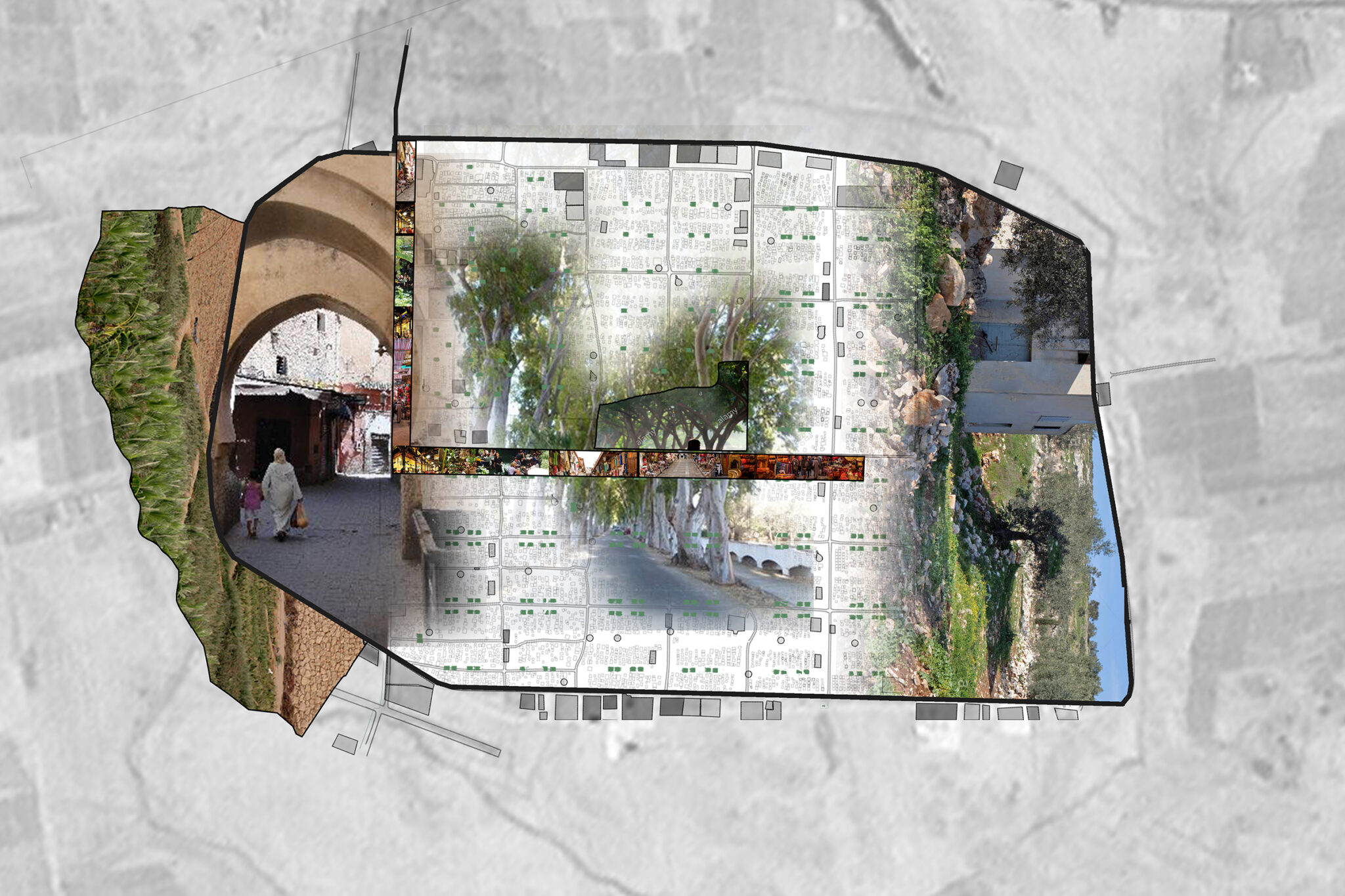
A series of pilot projects were designed:
Pilot project - Wadi Park between Za’tari camp and Za’atari village
The park is situated around a wadi, between the camp and the village. It should offer the inhabitants of Al Za'tari a pleasant and shaded green public space amidst the hot and dry desert. The park reduces flood risk by heavy rainfall and mudflows during the winter months, while water in the wadi is retained for use in drier times.
To increase the capacity of the wadi, side channels are dug - shallow watercourses flanked by clay dams that collect and retain water in the winter. Trees will be planted in these 'green rivers'. On terraces, open fields are arranged in different ways, such as with sports fields and orchards providing people with the facilities for a healthy lifestyle. A system of pathways connects the park to the camp and the village.
Pilot project - Health loop
The roads in the camp are more busy than one would expect. Many trucks occupy the roads and there no sidewalks. This often causes dangerous situations, especially for the children. The health loop provides a safe, car-free pedestrian loop through the camp connecting school zones and commercial zones. Where the topography allows it, rain water is harvested and used to irrigate the shading trees along the health loop. The safe and shaded Health Loop also contributes to physical and mental health by inviting people (especially women) who do not get out much for walks.
The Health loop has been designed with precision. Number of trees to be planted have been calculated in relation to the expected rain fall.
Pilot project – Emerging public spaces
Places where refugees had already taken initiatives to do or make things in the open space were identified as Emerging Public Spaces. The residents were consulted about these places by the front office staffed by the Municipality of Amsterdam. That input was used to make designs where refugees can meet each other or express their identities. Residents were involved in the realization of plans as well, which enabled them to gain new skills such as woodworking, welding and sewing.
The refugee camp of Al Za’tari grew into a settlement of about 80,000 Syrians. A development framework was made to guide urban progress in the future.
